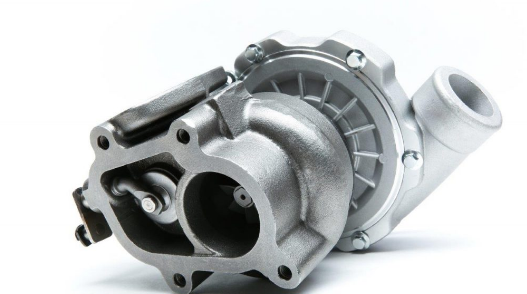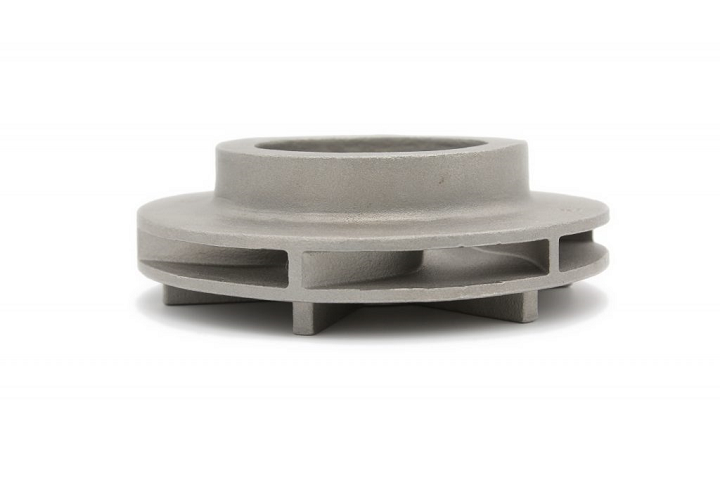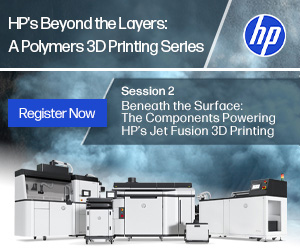UK company Enable Manufacturing was founded just last year, and focuses on the 3D printing of molds for metal casting, which are then used to fabricate high-quality metal production parts without having to deal with the hassle of tooling. Enable calls this method Additive Casting, as it links direct 3D metal printing with traditional metal casting processes. For such a young company, it’s got a pretty big headline to share. As of this spring, the company has majorly expanded the range of metals it’s able to produce with its Additive Casting process, bringing the total up to over 130. This is quite possibly the largest metal portfolio I’ve heard of in this industry, but that is because metal additive manufacturing plays an indirect role in the process.
“Our Additive Casting process combines the best of 3D printing and traditional casting to manufacture complex metal parts of any size cost effectively,” the company’s website states. “We use industrial 3D printing to produce moulds and patterns from which we can cast metal parts using nearly any metal. This approach eliminates the need for tooling allowing for more complex parts to be manufactured from your first prototype to your large annual production volume.”
The main challenges in the conventional casting process are long lead times and a high tooling cost, but lack of material compatibility causes issues for direct 3D metal printing. Enable’s Additive Casting is a good marriage of the two technologies, as costs go down when 3D printing molds but the amount of usable materials goes up.
Because the technology is able to fabricate parts at a higher rate of speed than traditional manufacturing processes can achieve, the adoption of direct metal 3D printing is growing. But, if customers can’t find the specific material they’re looking for, the parts have to be designed with different materials. This leads to performance being compromised, and the parts typically can’t be used as final production parts; obviously, this can increase production time. In addition, it’s not an easy task to approve new materials that work with direct 3D metal printing, which makes the process take even longer.
Most of the time, a standard metal like AISI 316L steel will do the trick, but some applications need material properties that direct 3D metal printing can’t always offer. As SmarTech VP of Research Scott Dunham explained at AMS 2020, healthcare is the top project application for metal 3D printing. But, the next in line is repairing industrial components, like turbine blades and valves, for heavy industry and aerospace sectors, and these parts need a higher fatigue strength than AISI 316L can provide. AISI 420 can be used to make stronger parts that won’t need to be replaced as often, but it can’t be used in direct 3D metal printing. However, it’s often used in Additive Casting, according to Enable Manufacturing.
In terms of maritime applications, AISI 316L doesn’t offer enough anti-corrosion properties to work well. A coating can be applied to the part in order to increase this, but it’s more expensive this way, and, if a more corrosion-resistant material like Hastelloy C276 is used, the part can’t be produced with direct 3D metal printing.
Because Enable’s Additive Casting process can now be completed with over 130 metals, engineers know from the very start that their parts can be made with the material they want—meaning that they are able to be used for mass production, which saves on both money and time.
You can see the full list of metal materials that Enable Manufacturing offers, which includes brass, gunmetal, nickel-copper alloys, and steel, here.
Discuss this story and other 3D printing topics at 3DPrintBoard.com or share your thoughts in the comments below.
Subscribe to Our Email Newsletter
Stay up-to-date on all the latest news from the 3D printing industry and receive information and offers from third party vendors.
Print Services
Upload your 3D Models and get them printed quickly and efficiently.
You May Also Like
3D Printing News Briefs, May 21, 2025: Medical Training Models, Connectors, Makerspace, & More
We’re starting with research and medical in today’s 3D Printing News Briefs, as a research team from Caltech is using sound to 3D print deep inside living tissue, and rural...
Low-Cost Binocular Indirect Ophthalmoscope Made with CAD Software & Bambu Lab X1C
3D printing is increasingly used in the fabrication of diagnostic equipment, including ophthalmology, which is a medical specialty that deals with the diagnosis and treatment of eye conditions and diseases....
3D Printing News Briefs, May 17, 2025: Color-Changing Materials, Humanoid Robot, & More
We’re covering research innovations in today’s 3D Printing News Briefs! First, Penn Engineering developed 3D printed materials that change color under stress, and UC Berkeley researchers created an open source,...
3D Printing News Briefs, May 14, 2025: Thermal Solutions, Food Safety, & More
In today’s 3D Printing News Briefs, Meltio announced a new sales partner in the Benelux region, and Eplus3D is helping TEMISTh to revolutionize metal additive manufacturing in thermal solutions. Moving...





































